

![]()
Book Reviews
 Locating Alexandra. Locating Alexandra.
|
Video Reviews
Features
|
Pat-a-Cake Dough Book and Kit.
Sharon E. McKay. Illustrated by Marilyn Mets.
Toronto: Somerville House Publishing, 1996.
47pp, paper, with four small containers of dough, $14.95
ISBN: 1-895897-62-9.
Preschool - Grade 1 / Ages 3 - 6.
***/4
Review by Joan Payzant
excerpt:
We were tempted to create wonderful, complicated dough projects. . . but this is a little person's book. We therefore have chosen sweet, simple projects and activities that build self-esteem by guaranteeing success.
THIS IS AN EYE-CATCHING KIT composed of a colourful, small book packaged with four containers of dough -- red, yellow, blue, and orange. The dough is reusable if sprinkled with a small amount of water and stored in an air-tight container. Alternatively, by using the recipe included in the text, anyone can make their own play-dough.
In March of this year a similar kit was reviewed in CM -- Gifts to Make with Crayola Model Magic. It is difficult to choose between the two for value. Crayola Model Magic dough air-dries while Pat-a-Cake dough must be dried in a microwave or regular oven. The Crayola kit is for older children and at $10.99 seems at first glance like better value, but though it's not as glossy or sophisticated, the Pat-a-Cake Dough Book can stand on its own as a source of entertainment.
Each project in the Pat-a-Cake Dough Book has a nursery rhyme or an original poem (two by Glenna Colling), accompanied by whimsical, brightly coloured illustrations by Marilyn Mets. After the dough has gone, the book will still provide amusement.
Recommended for anyone who entertains small children either for love or as a profession.
Joan Payzant is a retired teacher/librarian living in Dartmouth, N.S.
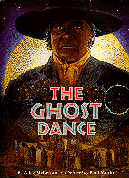
|
The Ghost Dance.
Alice McLerran. Illustrated by Paul Morin.
Grades 1 - 6 / Ages 6 -10.
****/4
|
excerpt:
Dance, said the dream.
Dance to call those ghosts alive again.
Dance, and the white men will all disappear,
their horses and their goods remain.
Dance, and the fish will fill the streams
and buffalo be many.
Dance.
 THE GHOST DANCE relates the history of the Ghost Dance Movements that took place across much of the United States in the late 1800s. The Ghost Dance doctrine envisioned a future in which all Indian nations would be united, hunger and disease would vanish, and the earth would be regenerated and restored.
THE GHOST DANCE relates the history of the Ghost Dance Movements that took place across much of the United States in the late 1800s. The Ghost Dance doctrine envisioned a future in which all Indian nations would be united, hunger and disease would vanish, and the earth would be regenerated and restored.

Author Alice McLerran sees in the tragic history of this sacred ritual an ecological parable for our times, and a vision for a more harmonious future for all who inhabit our planet.
The Ghost Dance is recounted with sensitivity and respect. McLerran's strongly cadenced, lyrical style and evocative language would make this an excellent read-aloud. Sumptuous paintings by award-winning illustrator Paul Morin (Fox Song; The Dragon's Pearl; and The Orphan Boy) complement and enrich the text. In addition to the paintings, Morin makes effective use of assemblage pieces incorporating natural and historical objects such as feathers, wampum beads, bullets, dream catchers, and a medicine pipe.
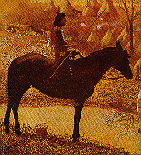
In the forward to Jon C. Stott's Native Americans in Children's Literature Joseph Bruchac writes:
. . . not only Native people can write about Native Americans, but . . . deep knowledge is necessary for anyone (Native or non-Native) to write well about those essential building blocks of Native American cultures -- the words of their elders, the traditional stories told to their children.Whether or not they have "deep knowledge," both McLerran and Morin obviously do possess an abiding interest in and appreciation for Native cultural and spiritual beliefs; their collaborative efforts have produced a picture book that should speak to a wide audience.
Highly recommended.
MaryLynn Gagne is a Reference Librarian with the Education Library, University of Saskatchewan Libraries.
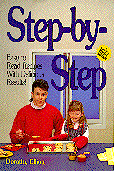
|
Step-by-Step:
Dorothy Elliott.
Grades 2 and Up / Ages 7 and Up.
**/4
|
excerpt:
This book is planned to be versatile. Because of the very simple vocabulary and the illustrations with each step, it is designed so children can use it independently. It can be used by newcomers to the English language and others who have difficulty reading long directions. And yes, it can also be used by adults who have enough self-esteem not to be insulted by the simplicity of the directions but who just want to create great tasting food!
AUTHOR DOROTHY ELLIOTT had good intentions when she created this simple cookbook. She originally designed many of these short, illustrated and easy to read recipes for her mentally handicapped cooking students. The straight-forward recipes allow children and novice cooks an opportunity to cook independently.
The table of contents lists all the recipes in the book. The forward explains how they are divided into three separate sections based on the level of the cook's ability.
Recipes in the "No-Heat" section do not need a stove or electric mixer to complete. "Oven Recipes" involve mixing and using the oven. Recipes in the "Stove-Top" section require careful supervision of children.
There is a very useful section called "Tips to Adults Teaching Cooking to Children." It puts the onus squarely on the supervising adults to gauge the child's capability first. A short checklist defines concepts children should know and skills that they should have mastered before continuing -- for example, how to measure or set a timer. Adults are also asked to make sure that kids know the difference between baking soda and baking powder. It would have been helpful if the author had provided readers with a brief summary of what those differences actually are!
Next comes a message "to the Cook" with useful organizational and cooking tips such as "break [an egg] into a small dish and check for shell before you put it in the dough." Simple safety and cleanliness rules follow. (Don't ever sneeze into the food.)
Two pages are devoted to "How to Measure." If necessary, adults are encouraged to help kids identify which measuring spoon to use by marking the handles with different coloured tape. Then children can colour the recipe's corresponding picture with a matching felt pen -- for example, put green tape on the handle of 1/3 cup measure, and when that measurement appears in the book, the child colours the cup graphic green.
Another two pages show and name several common household utensils, and then give young cooks a lesson on how to use an electric mixer.
After such thorough instructions, it's surprising to discover when we turn to the recipes that two in the "No-Heat" section involve making cold drinks with raw eggs. Health advice these days generally discourages people (especially children) from this potentially hazardous practice.
The recipes are extremely simple. Each reminds you to wash your hands before starting, and to turn off the stove when done. The top of each recipe lists ingredients, but some need clarification. For instance, the fruit salad recipe uses tinned oranges and pineapple but doesn't specify the size of can. Likewise for the Sloppy Beanwiches recipe that calls for one can of pork and beans.
There are a few other problems. The frozen Oreo Dessert uses "softened" ice cream, but doesn't tell cooks how that differs from "melted." There is a recipe for three-bean salad, but are there children who would actually eat it?
There are several colour photos of completed recipes in the book, with the corresponding names and a joke or riddle on the back of the page. The front cover is a bland photo of a teen and a young girl dishing up cookies. Although the book cautions adults to make sure kids wear oven mitts that fit, this youngster is drowning in hers.
Despite some drawbacks, this cookbook is an acceptable purchase, and could be useful for children learning to cook. The simple format and easy-to-read directions would be suitable for grade school children, the mentally challenged, or older ESL students.
Recommended.
A. Edwardsson is in charge of the Children's Department at a branch of the Winnipeg Public Library. She has a Bachelor of Education degree and a Child Care Worker III certification, and is a member of the Manitoba branch of the Canadian Authors' Association.
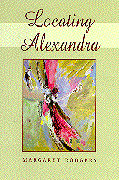
|
Locating Alexandra.
Margaret Rodgers.
Grades 10 and Up / Ages 14 to Adult.
***/4
|
excerpt:
Painting is like life itself: you learn as you go along, what to select, what to leave out -- this is very important, what goes with what, how to get interest and excitement with unity and balance, how to take the bad days with the good and last but not least how to enjoy and learn at the same time.-- Alexandra Luke
MARGARET ALEXANDER LUKE MCLAUGHLIN had two completely different names and identities. Artistically she was known as Alexandra Luke. Personally, she was known as Margaret McLaughlin. Many friends in her upper-class social set had no idea she was a hugely successful painter. This book, as its title states, attempts to place the woman within her various milieus.
It spite of being described by colleagues Jack Bush and Harold Town as the most successful female painter in Canada, Luke faced many obstacles. Locating Alexandra traces the complexities of her life: her struggle to establish a place in the art world; her unhappy marriage to wealthy, un-supportive man; the demands placed on her as a mother and society matron; her involvement with the spiritualism of Gurdjieff; and the artistic discrimination she suffered because of her gender. Her story is an archetypal example of the tensions and trials of a woman striving for success in a traditionally male domain.
Unfortunately, the writing in Locating Alexandra is not as fascinating as its subject. Author Margaret Rodgers originally wrote it as a thesis, and she has not successfully transformed it into a monograph for the lay reader; the result is confusing in both style and approach.
Rodgers handles each aspect of Luke's life separately, and though each section is well written (and intrinsically interesting), the sections do not fuse into a whole. The reader does not get a coherent sense of the artist's life.
Some of the parts, however, are worth the price of the book. The feminist analysis of marriage and motherhood in the chapter "Personal Life" is especially strong. And the discussion of the philosophical thought of Luke and her colleagues, and their involvement with mysticism, gives the reader a sense of the intellectual ferment that surrounded them.
Rodgers is the director of the Visual Arts Centre of Clarington, Ontario. Non artists will appreciate her straight-forward language and lack of "art-speak." Her slim monograph has no index, but includes a comprehensive bibliography of "works consulted."
Unfortunately, this book about a visual artist does not have colour illustrations of her work. Black-and-white reproductions cannot provide an understanding of the importance of colour in Luke's definition of space and depth. I was fortunate to have access to the 1987 catalogue Alexandra Luke: Continued Searching (Robert McLaughlin Gallery, Oshawa, Ontario) to see some examples of Luke's use of colour.
In spite of its shortcomings, I recommend this work. It's a welcome addition to the abysmally small number of studies of Canadian Women Artists. Gender Studies and Art programs will be enriched by it.
Recommended.
Frances Daw Bergles is librarian at the Mendel Art Gallery in Saskatoon.

|
Eurokids.
Directed by Les Wilson. Produced by Erina Rayner.
Grades 5 - 9 / Ages 10 - 14.
***/4
|
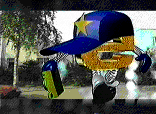 ACCORDING TO THE STAFF at T.H.A. Media, this video was made to "promote European awareness." To accomplish this goal, the makers interviewed young Europeans from seven countries. The two programmes contained on this video deal primarily with border crossings and school life, but other unrelated issues are discussed as well. The material is current, and recent changes in Europe are acknowledged (such as the division of Czechoslovakia into two republics). As well, the Europeans in this video look modern and discuss topical issues, which will appeal to a North American audience.
ACCORDING TO THE STAFF at T.H.A. Media, this video was made to "promote European awareness." To accomplish this goal, the makers interviewed young Europeans from seven countries. The two programmes contained on this video deal primarily with border crossings and school life, but other unrelated issues are discussed as well. The material is current, and recent changes in Europe are acknowledged (such as the division of Czechoslovakia into two republics). As well, the Europeans in this video look modern and discuss topical issues, which will appeal to a North American audience.
Young Europeans are the focus of this video and interviews with these "kids" appear unscripted. At several points the kids interviewed start laughing, but these minor gaffes create a more authentic piece. In one section students are asked to name which countries comprise Europe, and one youth lists the United States. Though this segment will likely draw laughs from young North Americans, such comments will also demonstrate an affinity between them and their European counterparts.
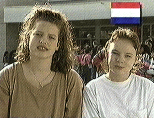
The scope of this video is ambitious. The film-makers' attempt to interview kids from seven countries in only thirty minutes (!) results in a disjointed, rock-video like pacing. Though I initially found this style annoying and difficult, I suspect that young people would have no trouble with it. A more serious problem was the rolling text at the bottom of the screen, which moved too quickly to allow a viewer to take in both text and visuals.
The intended audience for Eurokids is children aged ten to fourteen, although many of the "Eurokids" interviewed are several years older than this. But since showing children who are younger than the target group can seem like condescending to the audience, this is probably a wise approach.
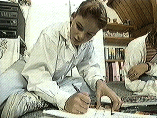
The vocabulary is appropriate for the age level and adult voices are rarely heard (one doesn't hear the interviewer asking questions). The makers of this video also recognize which incidents amuse kids, and inject some humour into the video. For instance, one "Eurokid" in an English class tells the teacher "I ate my dog," and another scene depicts a construction worker bent over with a big split in his pants (sure to get a laugh out of kids!).
Eurokids may give us only glimpses of what life for kids in Europe is like, but this is what the makers of the video set out to do. For instance, one segment shows a heavy rock band practicing in Berlin; another segment shows kids playing European football. The audience won't learn everything about Europe, but will know a bit more than they did about "Eurokids." Eurokids would be a good discussion starter for classes like social studies.
Though the technical quality is high, and Eurokids does provide young people with a light, fun look at contemporary European youth, this video is recommended with reservations. At $199.00 it's not essential, but would be an interesting supplement.
Recommended with reservations.
Theresa Yauk works in the Special Services Department at the Centennial library while pursuing a Masters degree in Library and Information Science. After watching this video, she would really LOVE to go to Europe, but being a student can't afford it. So if there are any generous benefactors out there with an extra few thousand dollars floating around. . .
The Tibetan Book of the Dead
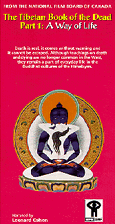
Part 1: | 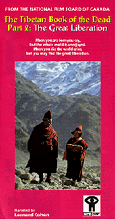
Part 2: |
International Baccalaureate / Ages 18 and Up
****/4
Review by Ian Stewart.
excerpt:
When you are born you cry,
but the whole world is overjoyed.
When you die the whole world cries,
but you may find the great liberation.
THE HARSH BEAUTY of the forbidding Himalayas provides the backdrop for much of the documentary The Tibetan Book of the Dead. The principaility of Ladakh, formerly Western Tibet, nestled between Pakistan and China, was chosen as it has been isolated from outside influences. Ladakh's religious practices have remained essentially unchanged since the introduction of Buddhism thirteen centuries ago. It is a mysterious, exotic world of gongs, prayer-wheels, chanting, and incense. A world where smiling, saffron-robed lamas (teachers) read strange books to the minds of the dead.
The Buddha said, "It is certain that I will die," but by this he meant the body, not the mind. For the Buddhist, the mind never dies. Mind, consciousness, one's true self, is eternally reincarnated in an uncontrolled cycle of birth and death and rebirth until it recognizes its true purpose. It must be awakened and liberated from worldly delusions and self-deceit.
Tibetan Buddhists believe that death, like life, is a process to be experienced and passed through until the time of the next reincarnation. They hold that the disembodied mind, freed from the bounds and cares of the body, is capable of hearing spoken words as it goes through the bardos (stages) of the death/rebirth experience. It can be guided through the bardos and perhaps find liberation from the eternal cycle or find a "good human birth" by hearing readings from the Bardo Thotrol (literally, "The Great Liberation Through Hearing in the Bardo). This book was translated into English in the 1920s as The Tibetan Book of the Dead.
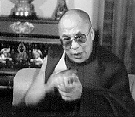
Part I: The Way of Life follows the funerary rites of an old man. We meet his family and the holy man who agrees to read the Bardo to the deceased on his journey towards rebirth. The essential Buddhist themes of the impermanence of life, reincarnation, compassion, and the path to enlightenment are subtly explained in this portion of the film. We are left with a quiet understanding of this ancient people's world view, which is enhanced by an interview with the exiled Tibetan spiritual leader, the fourteenth Dalai Lama.
We also go to the Living/Dying Project in San Francisco. There the Tibetan Book of the Dead is read to terminally ill patients. According to Ram Dass (formerly known as Dr. Richard Alpert), the project's leader, the hope is to provide the dying with a "new metaphor" for death.
The secularized Western world views death and dying as a medical and individual failure. This uncompassionate, isolating, and narcissistic conception sucks the remaining vitality and purpose of life from the human spirit.
The patients are receptive to the readings. They take a new, sprititual control of the terrible process their bodies are going through. In the end they are prepared and understand a larger purpose in death. Compassion, acceptance, and peace go together into the new realm beyond.

Part 2: The Great Liberation gives a more detailed examination of the teaching of the Bardo Thotrol. It follows a lama and his young disciple through the readings of the Bardo to the mind of a deceased young man. Because the death had come unexpectedly, the man not reflected on the meaning of life and was unprepared for its end. The lama knows the man's mind will be unwilling to leave this world behind, and so is unlikely to understand its true nature and might not find a good human birth.
The Tibetan Book of the Dead is a marvelous documentary creation. It is excellently written, and Leonard Cohen's narration suits the theme beautifully. The cinematography is breathtaking: snow-capped, mighty moutains prinpricked by isolated towns provide suitable images of insignificant humanity in a vast, lonely, and hostile universe.
Yet this view is juxtaposed with a sensitive portrayal of Tibetan Buddhism's central tenet: To seek truth and practice compassion is the meaning and purpose of life. The characters of the lamas -- filled with joy and compassion -- imbue the film with the light of their eternal hopes for the world.
This is a film that demands multiple viewing. The subtleties of the Tibetan world view are complex. Unless students are familiar with basic themes, much of the film's value will be lost. Consequently, it should be used for courses on comparitive religion at the International Bacclaureate level or higher.
Highly recommended.
Ian Stewart works at Lord Nelson School in Winnipeg and at the University of Winnipeg Library.

a) independently
b) as a team or group
c) as a team or group representing a class or school
Since this is an Olympic year let's go back to an Olympics question for our final question of the year. This is a two-part "Who am I?" question. You must get both parts to get credit.
- In 1992 I suffered a training accident two months before the Barcelona Olympics, in which I broke my ankle and had serious ligament damage to the ankle.
- After medical treatment I decided to resume my training for Barcelona, which, by now, was only a few weeks away.
- I competed in Barcelona and won a third place bronze medal.
- This summer I will attempt to win a gold at Atlanta.
DUE DATE FOR THIS ANSWER: 22 JUNE, 1996
Steve_Caldwell@colby.on.infoshare.ca or stepcald@enoreo.on.ca
Fiddler Ashley McIssac is the latest in a long line of entertainers to come from this Canadian island. Others include the Bara McNeils, The Rankin Family and Rita McNeil.What is the name of this Canadian island?
 Winners
Winners![]()
|
Executive Assistant Peter Tittenberger  e-mail: cm@umanitoba.ca
e-mail: cm@umanitoba.ca
|
 majordomo@mbnet.mb.ca
majordomo@mbnet.mb.ca
Postal address:
CM
100 Arthur Street, Suite 208
Winnipeg, MB R3B 1H3
![]()
Copyright © 1996 the Manitoba Library Association.
Reproduction for personal use is permitted only if this copyright notice
is maintained. Any other reproduction is prohibited without
permission.
Published by
The Manitoba Library Association
ISSN 1201-9364
![]()
WELCOME | BOOK REVIEWS BY AUTHOR | BOOK REVIEWS BY TITLE
AUDIO/VIDEO/CD-ROM REVIEWS | VOLUME II INDEX | SEARCH